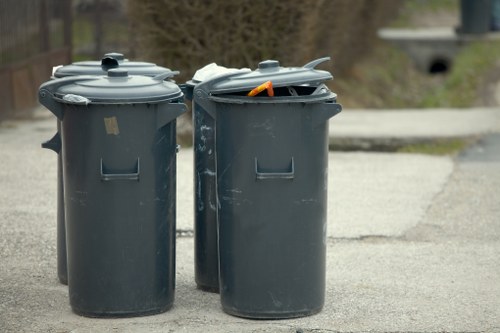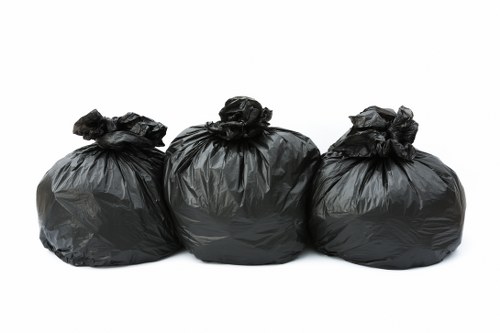Council Waste Collection in London House Clearance
Introduction to Council Waste Collection in London House Clearance

The rapid urban growth in London has prompted both residents and local authorities to pay closer attention to the process of house clearance. In recent years, council waste collection in London house clearance has become a key element of urban management, ensuring that waste is not only disposed of properly but also recycled and repurposed whenever possible. This practice not only sustains the aesthetic and environmental quality of the city but also ensures compliance with local regulations. With households updating or downsizing, proper waste collection plays an essential role in keeping the city clutter-free and environmentally efficient.
Historically, waste management in London has evolved significantly. Early practices gave way to comprehensive systems that now involve specialized council waste collection teams and modern technologies. Council waste collection in London house clearance has deeply integrated with local environmental initiatives, providing a bridge between individual house clearance and the broader municipal sustainability goals. As the city continues to expand and older properties are refurbished, these systems are crucial for supporting urban renewal and preserving the charm of historic neighborhoods while embracing modern waste management mandates.
Today, London residents find themselves at the crossroads of tradition and innovation. In the realm of house clearance, council waste collection is not just about removing unwanted items; it is about understanding the impact of waste on society and the environment. Local councils have established detailed protocols to maintain public health and safety while also promoting responsible recycling and disposal practices. This article explores the multifaceted world of council waste collection in London house clearance, discussing its evolution, regulatory framework, and the multiple benefits it brings to the community as a whole.
Understanding Regulatory Framework and Council Guidelines

For anyone involved in house clearance, a thorough understanding of council waste collection in London house clearance and its accompanying regulations is imperative. The regulatory framework set by local authorities is designed to protect residents, the environment, and public health. Strict guidelines dictate how different types of waste should be separated, stored, and collected. Failure to adhere to these rules can lead to penalties and environmental hazards. Understanding these protocols not only smooths the clearance process but also enhances sustainable practices across London.
Local councils have introduced clear steps and checkpoints to ensure proper waste segregation and disposal. From hazardous materials to recyclable items, every category of waste is monitored and processed separately. Key documents, such as council waste management policies and environmental impact assessments, are readily available to guide homeowners and clearance companies. These guidelines help ensure that all clearance activities meet local and national standards, thereby safeguarding the community and securing long-term environmental benefits.
Key Tips for Compliance
Adhering to council guidelines is easier than it might initially appear. First, plan your clearance activities in advance by consulting local waste management guidelines. Second, segregate items diligently to facilitate recycling processes. Finally, ensure that any hazardous substances are handled by certified professionals. This regulatory clarity has set a benchmark for efficient council waste collection in London house clearance, establishing trust between local authorities and households while fostering an eco-friendly culture throughout the city.Planning and Process of House Clearance in London

Effective planning is the cornerstone of any successful house clearance operation, particularly when it involves council waste collection in London house clearance. Before clearance begins, it is essential to understand the scale of the project and the specific requirements mandated by the local council. Typically, the process commences with a detailed assessment of the property. This includes an inventory of items to be cleared, a categorization of recyclable versus non-recyclable items, and an evaluation of disposal methods. By integrating these preparatory steps into the planning process, residents can ensure that the clearance proceeds smoothly while meeting all legal obligations.
The process also involves scheduling the collection in coordination with council waste collection services. Homeowners often must arrange for clearance on specific days when the council’s special clearance units are operational. This coordination minimizes delays and avoids potential fines that could result from missed pickups or improperly sorted waste. In addition, planning ahead allows clearance companies to optimize routing and resource allocation, ensuring that the clearance operation is both environmentally sound and economically efficient. In doing so, the city’s commitment to sustainable waste management becomes a shared responsibility between the council and residents.
Once the planning stage is complete, the clearance execution involves several well-defined steps. An organized list of tasks might include:
- Sorting waste according to council regulations
- Coordinating pickup times with waste collection units
- Documenting the clearance process for compliance verification
Benefits and Innovative Approaches in Council Waste Collection

The advantages of a robust council waste collection system in London house clearance are manifold. Beyond environmental benefits, such as reduced landfill usage and higher recycling rates, there are significant social and economic benefits as well. The council waste collection in London house clearance initiative helps in generating local employment, fostering a community spirit, and reducing the burden on private waste management companies. This systemic approach has helped London position itself as a forward-thinking city that not only cleans up its surroundings but also revives materials through recycling and repurposing.
Innovation is at the heart of modern waste management practices. Cutting-edge technologies, such as real-time tracking of waste collection vehicles and advanced recycling facilities, have been integrated into the council’s operation. These innovations facilitate efficient routing and minimize carbon footprints by optimizing collection schedules. Residents now benefit from digital platforms that provide real-time updates on their clearance schedules and offer advice on reducing household waste. By leveraging technology, councils are not only ensuring compliance with regulatory mandates but are also fostering a culture of sustainability and environmental consciousness.
Embracing Innovation for a Greener Future
The integration of technological advancements in council waste collection processes marks a new era in house clearance in London. Innovative companies have introduced automated sorting systems and eco-friendly collection vehicles that reduce emissions significantly. Moreover, the use of data analytics helps in predicting waste volumes during peak periods, thus allowing the council to adjust resources accordingly. These practices not only enhance operational efficiency but also promote a cleaner, greener city. Embracing such innovative approaches ensures that the city’s council waste collection in London house clearance practices remain both sustainable and future-proof, setting a global standard for urban waste management.Future Outlook, Challenges, and Call-to-Action

Looking to the future, the landscape of council waste collection in London house clearance faces both exciting opportunities and daunting challenges. As London continues to grow, the sheer volume of waste is expected to increase, demanding even more robust systems and innovative solutions. However, challenges such as budget constraints, fluctuating regulatory policies, and the need for continuous public education persist. Local councils are proactive in addressing these challenges by investing in research, developing new technologies, and updating strategic plans that align with long-term environmental goals. In this dynamic context, flexibility and community involvement remain key to maintaining effective waste collection services.
This dynamic sector also sees continuous input from multiple stakeholders including private contractors, non-governmental organizations, and the residents themselves. The future of council waste collection in London house clearance rests on collaborative efforts. For instance, partnerships between local councils and private innovators have led to the implementation of smart bins, and improved waste tracking systems, and the effective use of data analytics has helped predict seasonal spikes in waste. These collaborations promote a resilient ecosystem that benefits from diverse expertise, ensuring that future challenges are met with informed, holistic strategies.
Now more than ever, the importance of community participation and regulatory compliance cannot be overstated. If you are preparing for a house clearance or looking to improve your current waste management practices, it is time to take decisive action. Contact us today to learn more about how you can contribute to a greener, cleaner London. With the assistance of professional council waste collection services, you can streamline your house clearance process and ensure that all waste is processed responsibly. Book your service now and join the community of Londoners committed to sustainable urban living. Your participation is key to turning challenges into opportunities and setting new benchmarks for environmental stewardship in the capital.



